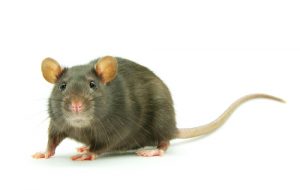Trapping Rats
By Chris Williams on October 13, 2011.
Q. Can you catch a rat in a regular old wooden snap trap? I think I have a rat burrowing outside around the side of my garage where I keep my garbage cans. There’s a large hole under a shrub there that seems to be bigger than a mouse hole. I caught a glimpse of him once and I think it’s a rat. Gross! If I put some cheese or something on a trap, do you think I could catch him? I really don’t want to use poison.
A. If you use a regular mouse-sized snap trap, you might be able to catch the rat but you probably won’t kill him. He’ll be able to drag the trap away, though injured. You need to use a snap trap specifically made for rats. A rat trap is bigger and stronger. Look for one that has an expanded trigger or pedal. The larger pedal provides greater leverage and is easier to set.
Other animals are going to be attracted to any bait that you put on that trap, so you really need to place the trap inside a rodent bait station or box that has openings that will only allow the rat inside. You don’t want to trap someone’s cat or a raccoon!
 In addition, you need to anchor the rat trap or bait station to make sure the rat can’t drag it away if only caught by a leg. You can do that by wiring it to some large object or you can glue it down to a spare patio block, a cinder block, or a large board by using a product like Liquid Nails. Ideally, you’ll want to place more than one trap to improve your success rate.
In addition, you need to anchor the rat trap or bait station to make sure the rat can’t drag it away if only caught by a leg. You can do that by wiring it to some large object or you can glue it down to a spare patio block, a cinder block, or a large board by using a product like Liquid Nails. Ideally, you’ll want to place more than one trap to improve your success rate.
As to the bait — rats, of course, will eat almost anything but prefer protein baits. Some food baits that usually work well for rats are sardines, bits of hot dog or bacon (uncooked), or peanut butter. If you buy a rat trap with an expanded trigger, bait is not always necessary if the trap can be placed along a rat runway. The rat is going to be wary of your trap and will probably avoid it at first. You should try baiting the trap but leaving it unset for a few nights until the rat is used to feeding at the trap. Then set it. Keep in mind that, while you’ve seen one rat, there could be many more to trap.
Make sure that any spillage around your garbage cans is picked up right away and that the lids are always on tightly. If you have plastic cans and the rat has been chewing on them, you should switch to galvanized metal cans. You can also make the area around the garbage cans less hospitable for the rat by clearing the immediate space. Either remove the shrubbery or cut it back so the burrow opening is exposed. Fill in the burrow and add a top coat of gravel under the shrubs to make burrowing more difficult for the rat. The rat will try to re-open the burrow. Also, make sure you’re not supplying the rat with other food like pet food left outside, bird seed under feeders, or garden vegetables or fruits on the ground.
If all of this sounds like more than you want to deal with, or if you’re not able to trap the rat, give Colonial a call. Our technicians are pros at trapping the wary rat. If we need to, we can use bait placed in ways that will not expose other animals. We use tamper-resistant bait stations that conceal the bait and keep other animals out. Give Colonial a call. We’ll send our rodent experts out right away.